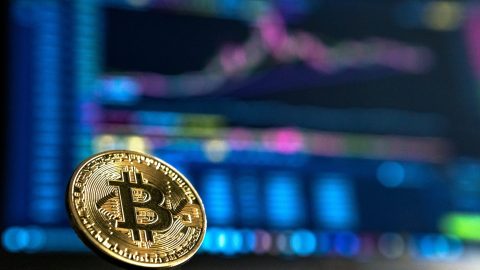According to coinmarketcap.com, the total market of cryptocurrencies has exceeded the USD 1,000bn threshold. Although the website lists more than 8,000 cryptocurrencies (CCs), Bitcoin and Ethereum make up 85% of total capitalisation. The USD 1,000 bn threshold was exceeded once the two flagships of the crypto scene had extended their gains yet again. Before looking at the rise in Bitcoin prices, let us quickly talk about the high number of CCs.
First of all, it is important to understand that the more than 8,000 constitute a vast array of different projects and that the term “currency” does not always hit the mark. The term “digital token” applies more neatly, and we can slot them into the following categories:
Payment tokens:
This form of token was created for payment. They all have in common that they apply cryptographic forms of encryption and are based on a decentralised blockchain structure. The issuer does not have to be known, as is the case for the main protagonist, Bitcoin. Other examples of payment tokens are Bitcoin Cash or Litecoin.
Stable coins (EU term: asset reference tokens):
Tether is the third on the list of coinmarketcap. The value of stable coins is tethered to a specific asset – in the case of Tether, to the US dollar (1 Tether = USD 1). The plans of facebook to issue a token falls into his category. One Libra (or the new name, Diem) is supposed to represent the value of a basket consisting of various currencies and bonds. According to the proposal from the EU Commission, stable coins will soon be regulated in the EU.
The European Banking Authority (EBA) will decide on whether stable coins will be admissible for the EU. The decision will be based on the question if the tokens would foil the goals of the ECB, i.e. if they were to assume a certain degree of system relevance.
Platform tokens:
Some projects allow the development of decentralised applications that are based on blockchain. These require so-called smart contracts that are used in coding (technically speaking, these are “IF – THEN” protocols). Ethereum and Polkadot, the numbers 2 and 4 by capitalisation, are prominent members of this group.
Ethereum has its own currency (Ether) that is needed to operate applications. Many applications belong to the category of decentralised finances (DeFi), which are currently going through a boom phase. In the list of coinmarketcap, some of these DeFi projects are featured with their own coins, such as e.g. Wrapped Bitcoin, Uniswap, and Aave. If you are interested in more information on this topic, you can find the most important applications on the website defipulse.
Utility tokens
Utility tokens are a form of vouchers or admission licences stored on a blockchain. They grant the holder access to a product or a service. They should only be bought if you actually want to claim said product or service. These tokens are not suitable for investment (Ripple being one of them).
Within the framework of the crypto asset regulation (MiCA), the EU will regulate this form of tokens, largely to protect retail investors; during the last bull run of 2017 many of them bought these tokens without knowing what was behind this product or whether this was even a reputable project. A large part of the (more than) 8,000 CCs belong to this category, and there is no reason to scrutinise them for investment purposes.
Central Bank Digital Currencies (CBDC)
Many central banks are currently experimenting with issuing CBDCs There are two different approaches. First, a central bank can issue digital tokens that the user holds in a wallet and can pay with. The second form of digital tokens is called “account-based”. Here, a user has an account directly with the central bank. At present, it is not clear which form will prevail.
The pioneer in this field is China with the issue of the digital yuan. This form of currency is currently being tested. Also far advanced is the Riksbank in Sweden with its e-Krona. The ECB is currently still in the testing phase.
Although CBDC are repeatedly compared with CC, this form of digital currency does not necessarily have to be built on a decentralized blockchain. A so-called permissioned (not publicly accessible) blockchain operated by commercial banks is conceivable.
Unlike stable coins, the issuer is a central bank and not a company. CBDCs are also a claim against a central bank and are considered a “legal tender” (i.e., you can use them to pay taxes and debts).
Important legal information:
Forecasts are not a reliable indicator of future developments.
Legal disclaimer
This document is an advertisement. Unless indicated otherwise, source: Erste Asset Management GmbH. The language of communication of the sales offices is German and the languages of communication of the Management Company also include English.
The prospectus for UCITS funds (including any amendments) is prepared and published in accordance with the provisions of the InvFG 2011 as amended. Information for Investors pursuant to § 21 AIFMG is prepared for the alternative investment funds (AIF) administered by Erste Asset Management GmbH pursuant to the provisions of the AIFMG in conjunction with the InvFG 2011.
The currently valid versions of the prospectus, the Information for Investors pursuant to § 21 AIFMG, and the key information document can be found on the website www.erste-am.com under “Mandatory publications” and can be obtained free of charge by interested investors at the offices of the Management Company and at the offices of the depositary bank. The exact date of the most recent publication of the prospectus, the languages in which the fund prospectus or the Information for Investors pursuant to Art 21 AIFMG and the key information document are available, and any other locations where the documents can be obtained are indicated on the website www.erste-am.com. A summary of the investor rights is available in German and English on the website www.erste-am.com/investor-rights and can also be obtained from the Management Company.
The Management Company can decide to suspend the provisions it has taken for the sale of unit certificates in other countries in accordance with the regulatory requirements.
Note: You are about to purchase a product that may be difficult to understand. We recommend that you read the indicated fund documents before making an investment decision. In addition to the locations listed above, you can obtain these documents free of charge at the offices of the referring Sparkassen bank and the offices of Erste Bank der oesterreichischen Sparkassen AG. You can also access these documents electronically at www.erste-am.com.
Our analyses and conclusions are general in nature and do not take into account the individual characteristics of our investors in terms of earnings, taxation, experience and knowledge, investment objective, financial position, capacity for loss, and risk tolerance. Past performance is not a reliable indicator of the future performance of a fund.
Please note: Investments in securities entail risks in addition to the opportunities presented here. The value of units and their earnings can rise and fall. Changes in exchange rates can also have a positive or negative effect on the value of an investment. For this reason, you may receive less than your originally invested amount when you redeem your units. Persons who are interested in purchasing units in investment funds are advised to read the current fund prospectus(es) and the Information for Investors pursuant to § 21 AIFMG, especially the risk notices they contain, before making an investment decision. If the fund currency is different than the investor’s home currency, changes in the relevant exchange rate can positively or negatively influence the value of the investment and the amount of the costs associated with the fund in the home currency.
We are not permitted to directly or indirectly offer, sell, transfer, or deliver this financial product to natural or legal persons whose place of residence or domicile is located in a country where this is legally prohibited. In this case, we may not provide any product information, either.
Please consult the corresponding information in the fund prospectus and the Information for Investors pursuant to § 21 AIFMG for restrictions on the sale of the fund to American or Russian citizens.
It is expressly noted that this communication does not provide any investment recommendations, but only expresses our current market assessment. Thus, this communication is not a substitute for investment advice.
This document does not represent a sales activity of the Management Company and therefore may not be construed as an offer for the purchase or sale of financial or investment instruments.
Erste Asset Management GmbH is affiliated with the Erste Bank and austrian Sparkassen banks.
Please also read the “Information about us and our securities services” published by your bank.

